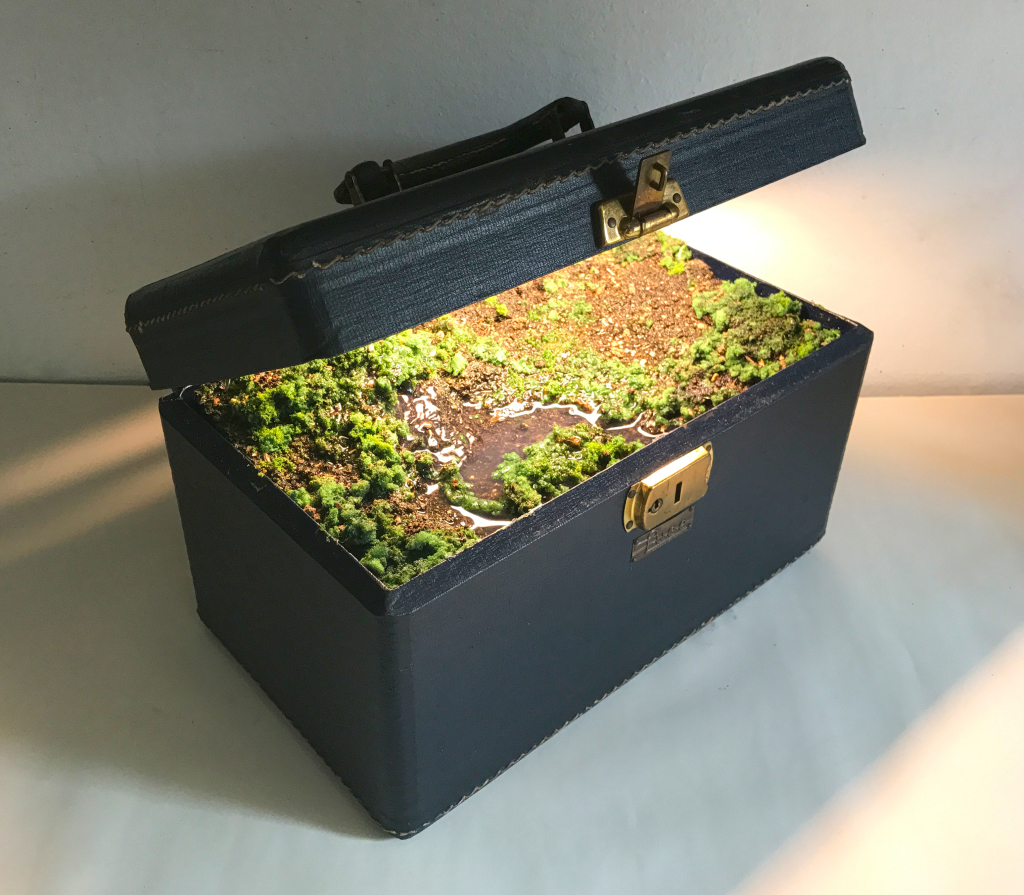
Kathleen Vance, a self-described environmental artist, has been experimenting with large-scale installation landscapes for several years. Here, she discusses her recent “Traveling Landscapes”—smaller, self-contained ecological systems placed inside vintage suitcases—and why assembling a landscape inside a suitcase can be an act of environmental awareness.
“I grew up on a farm in Maryland, and ended up staying in New York City after my undergraduate work at the Pratt Institute. I realized that there was a disconnect for people between living in an urban environment and experiencing nature. I started creating massive, immersive environments for people to walk into. Those pieces incorporated live plants, had a complicated irrigation system, and were challenging to engineer and maintain. I wanted to focus on bringing nature into people’s everyday lives. The suitcases became a way to give a feeling of scale without building the environment around the people—it was a containment system for the natural landscape.
The early pieces have live plant material, similar to what I was using for the large-scale installations. They were all engineered to be self-sustaining, but the mechanics of doing that and the structure underneath were very complicated. Now what I work with is all sterile materials, so it’s pretty good for people in all kinds of situations, especially if the cases go to hospitals or something like that. I’m always on the lookout for vintage suitcases. I’m not thinking about modern travel. These older cases are associated with restricted and slower forms of travel, such as train cases or steamer trunks. Long-distance air travel changed the style of suitcases. I am interested in objects people won’t recognize from their daily lives.
These works aren’t site-specific, but I do consider where those landscapes would have been taken from. They all incorporate an element of running water in them. I’ve removed any indications of man or buildings or roads. It’s this romantic idea of untouched nature, and considering where the water is coming from within those landscapes. I want people to just enjoy nature and think about how they would personally be able to protect it. We all exist on the earth, and some people are lucky enough to own parts of the land. How they maintain it and how they get rid of their own waste is something to consider, too. Everything that you flush down the toilet or run down the sink is being recirculated throughout the earth. The suitcase gives a physicality to this philosophy about protecting nature. It’s an easy entry point for people to consider what their position is in the natural world.”

